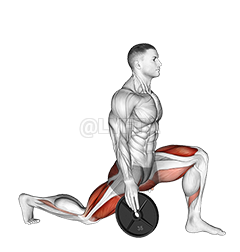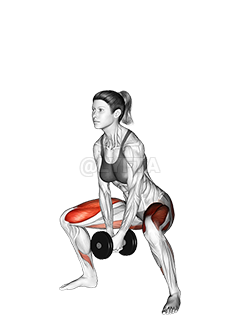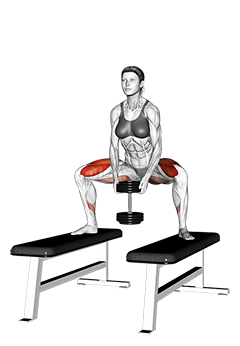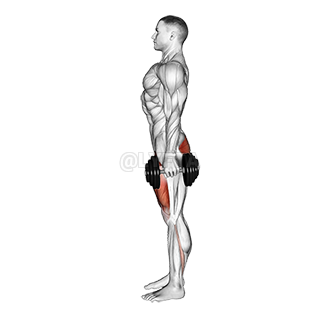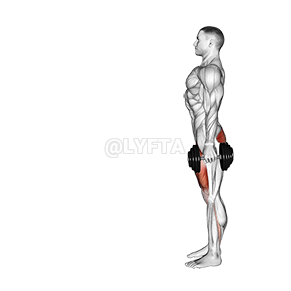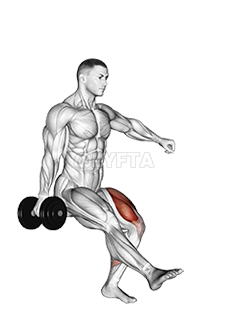
Dumbbell Swing
Exercise Profile
Related Exercises:
Introduction to the Dumbbell Swing
The Dumbbell Swing is a dynamic full-body exercise that primarily targets the glutes, hamstrings, hips, core, and the shoulders. It is an ideal workout for individuals of all fitness levels looking to improve their strength, power, balance, and endurance. People would want to perform this exercise as it not only aids in fat burning and muscle building, but also enhances cardiovascular health and promotes better posture.
Performing the: A Step-by-Step Tutorial Dumbbell Swing
- Lower your body into a squat, swinging the dumbbell between your legs while keeping your back straight and your chest up.
- Push your hips forward and straighten your legs to swing the dumbbell up to chest height while keeping your arms straight.
- Allow the dumbbell to swing back down, returning to the squat position, maintaining control of the weight throughout the movement.
- Repeat these steps for the desired number of repetitions, ensuring to maintain form and control throughout the exercise.
Tips for Performing Dumbbell Swing
- Avoid Using Your Arms: A common mistake is using the arms to lift the dumbbell. The Dumbbell Swing is a hip-dominant exercise and the power should come from your hips and glutes, not your arms or shoulders. Your arms should only be guiding the weight, not lifting it.
- Do Not Overextend: At the top of the swing, your body should form a straight line. Avoid leaning back or overextending your hips, as this could put unnecessary strain on your lower back and potentially lead to injury.
- Choose the Right Weight: Start with
Dumbbell Swing FAQs
Can beginners do the Dumbbell Swing?
Yes, beginners can certainly do the Dumbbell Swing exercise. However, it's important to start with a light weight until you get the form correct. This exercise involves both the upper and lower body, so it's crucial to ensure you're doing it right to avoid injury. It's always a good idea to have a trainer or experienced gym-goer check your form if you're unsure.
What are common variations of the Dumbbell Swing?
- Alternating Dumbbell Swing: In this variation, you switch the dumbbell from one hand to the other at the top of the swing, increasing the challenge to your coordination and core stability.
- Double Dumbbell Swing: This version requires you to use two dumbbells, one in each hand, which increases the overall weight and intensity of the exercise.
- Squat Dumbbell Swing: This variation involves a deeper squat at the beginning of the swing, which can help to engage the lower body more.
- Overhead Dumbbell Swing: In this variation, instead of stopping at shoulder height, you swing the dumbbell all the way overhead, which can help to engage the shoulders and upper back more.
What are good complementing exercises for the Dumbbell Swing?
- Squats: Squats work the same muscle groups as dumbbell swings, such as the glutes, hamstrings, and core, but in a more static, controlled manner, which can help improve overall strength and stability.
- Deadlifts: Deadlifts also target similar muscles as dumbbell swings, but they focus more on the lifting phase, helping to improve the power and strength needed in the 'swing' part of the dumbbell swing.
Related keywords for Dumbbell Swing
- Dumbbell Swing workout
- Hamstring strengthening exercises
- Thigh toning with dumbbells
- Dumbbell exercises for legs
- Dumbbell Swing for hamstrings
- Lower body workout with dumbbells
- Dumbbell Swing leg exercise
- Thigh and hamstring workout
- Dumbbell Swing technique
- Dumbbell Swing for leg muscles
